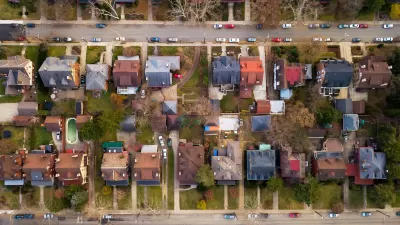In Australia, a new study will determine the best ways to make high-density developments healthy places to live.

A team of academics from several Australian universities have begun a two-and-a-half year study to determine the best strategies for designing high-density developments that promote physical and mental health—specifically type 2 diabetes, heart disease and depression.
According to one of the principle designers of the study, "There is a lack of research in Australia and around the world on what is needed to ensure people can live healthy, sustainable lives in an increasingly urbanised environment. There are a lot of questions we don't have the answers to.”
Density and sprawl have become important topics in Australian cities, where, as in the United States, urban land values have grown significantly and affordable housing is getting pushed out.
Though there are the risks of increased air pollution and social isolation, a number of studies have demonstrated the health benefits of density—mainly because it means more transit, more walking, and often, more social interaction. Or at least, as Planetizen contributor Michael Lewyn recently concluded, downtown won’t kill you.
FULL STORY: Urban planning being investigated in preventing type 2 diabetes in Australia

Manufactured Crisis: Losing the Nation’s Largest Source of Unsubsidized Affordable Housing
Manufactured housing communities have long been an affordable housing option for millions of people living in the U.S., but that affordability is disappearing rapidly. How did we get here?

Americans May Be Stuck — But Why?
Americans are moving a lot less than they once did, and that is a problem. While Yoni Applebaum, in his highly-publicized article Stuck, gets the reasons badly wrong, it's still important to ask: why are we moving so much less than before?

Using Old Oil and Gas Wells for Green Energy Storage
Penn State researchers have found that repurposing abandoned oil and gas wells for geothermal-assisted compressed-air energy storage can boost efficiency, reduce environmental risks, and support clean energy and job transitions.

Minneapolis Bans Rent-Setting Software
Four cities have enacted restrictions on algorithmic software that can inflate rent costs.

Oakland to Add 244 New EV Chargers
Oakland plans to launch its new charging network at eight locations by the end of 2025.

Jane Goodall Inspires with Message of Hope, Resilience, and Environmental Action
Speaking in Pasadena, Jane Goodall offered a hopeful and inspirational message, urging global compassion, environmental responsibility, and the power of individual action to shape a better future.
Urban Design for Planners 1: Software Tools
This six-course series explores essential urban design concepts using open source software and equips planners with the tools they need to participate fully in the urban design process.
Planning for Universal Design
Learn the tools for implementing Universal Design in planning regulations.
Heyer Gruel & Associates PA
City of Moreno Valley
Institute for Housing and Urban Development Studies (IHS)
City of Grandview
Harvard GSD Executive Education
Salt Lake City
NYU Wagner Graduate School of Public Service
City of Cambridge, Maryland





























